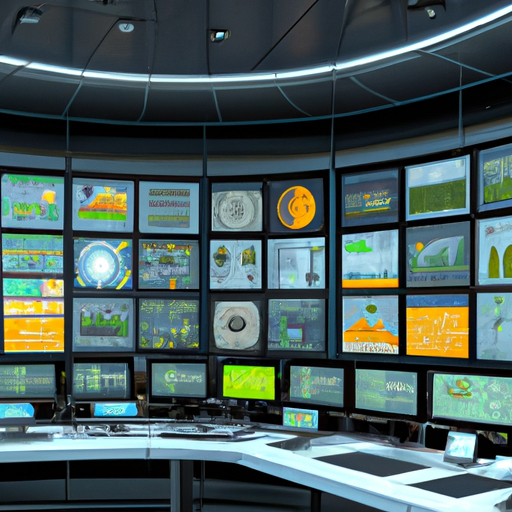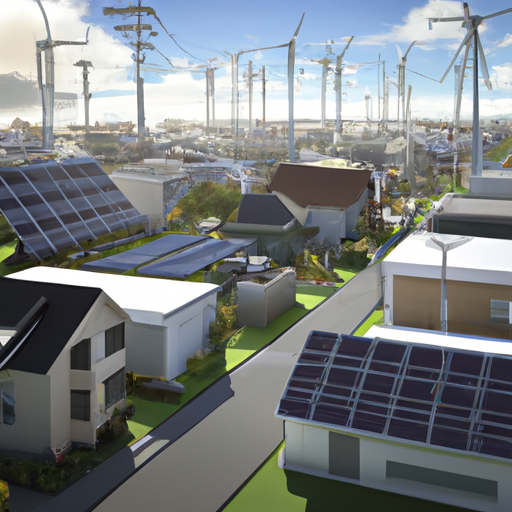Smart microgrids are transforming how communities generate, store, and distribute renewable energy at the local level. These innovative systems combine solar, wind, and battery storage with advanced AI management to create resilient power networks. Discover how microgrids are empowering communities to achieve energy independence while reducing carbon emissions.

As the world transitions toward renewable energy, smart microgrids are emerging as a revolutionary solution that combines clean energy generation, advanced storage systems, and intelligent distribution networks. These localized power systems are reshaping our approach to energy management and offering communities unprecedented control over their energy future.
At their core, smart microgrids are self-contained electricity networks that can operate independently or in conjunction with the main power grid. They typically integrate various renewable energy sources, such as solar panels and wind turbines, with battery storage systems and smart management technologies. This combination creates a resilient and efficient power network that can serve anything from a single building to an entire neighborhood or campus.
One of the most significant advantages of microgrids is their ability to enhance energy resilience. During main grid outages caused by natural disasters or technical failures, microgrids can operate in 'island mode,' ensuring continuous power supply to critical facilities like hospitals, emergency services, and community centers. This capability has become increasingly valuable as climate change leads to more frequent extreme weather events.
The intelligence built into modern microgrids sets them apart from traditional power systems. Advanced artificial intelligence and machine learning algorithms continuously optimize energy flow, predicting demand patterns and adjusting generation and storage accordingly. These systems can automatically switch between different power sources, maximize renewable energy usage, and minimize reliance on fossil fuel backup systems.
Energy storage plays a crucial role in microgrid functionality. The latest battery technologies, including flow batteries and advanced lithium-ion systems, enable microgrids to store excess renewable energy for use during peak demand periods or when renewable generation is low. Some communities are experimenting with innovative storage solutions, such as repurposed electric vehicle batteries or hydrogen fuel cells.
The economic benefits of microgrids are becoming increasingly apparent. While initial installation costs can be significant, the long-term savings from reduced energy costs, decreased transmission losses, and lower maintenance requirements often result in favorable returns on investment. Additionally, some microgrids can generate revenue by selling excess power back to the main grid or participating in demand response programs.
Community engagement and ownership models are evolving alongside microgrid technology. Some neighborhoods are forming energy cooperatives, where residents collectively invest in and manage their microgrid infrastructure. This approach not only spreads the costs and benefits among participants but also creates a stronger sense of community and energy awareness.
The environmental impact of microgrids extends beyond renewable energy integration. By generating power closer to where it's consumed, microgrids significantly reduce transmission losses that plague traditional power grids. They also enable more efficient use of resources through real-time monitoring and adjustment of energy consumption patterns.
Regulatory frameworks are adapting to accommodate the growth of microgrids. Many jurisdictions are updating their energy policies to facilitate microgrid development, including streamlined permitting processes and new tariff structures that fairly compensate microgrid operators for the services they provide to the broader grid.
The integration of electric vehicles (EVs) into microgrids presents exciting opportunities. EVs can serve as mobile battery storage units, providing additional flexibility to the system. Some communities are implementing vehicle-to-grid (V2G) technology, allowing parked EVs to both draw from and contribute to the microgrid's power supply.
Cybersecurity is a critical consideration in microgrid design. As these systems become more sophisticated and interconnected, protecting them from cyber threats becomes increasingly important. Advanced encryption, secure communication protocols, and regular security audits are essential components of modern microgrid infrastructure.
Looking ahead, the potential for microgrid expansion is substantial. As technology costs continue to decline and energy storage capabilities improve, more communities will likely adopt these systems. The development of standardized designs and plug-and-play components will make implementation easier and more cost-effective.
The revolution in smart microgrids represents a fundamental shift in how we think about energy distribution and management. By combining renewable generation, advanced storage, and intelligent control systems, microgrids are creating a more resilient, sustainable, and democratized energy future. As this technology continues to evolve, it will play an increasingly important role in our transition to a clean energy economy.



